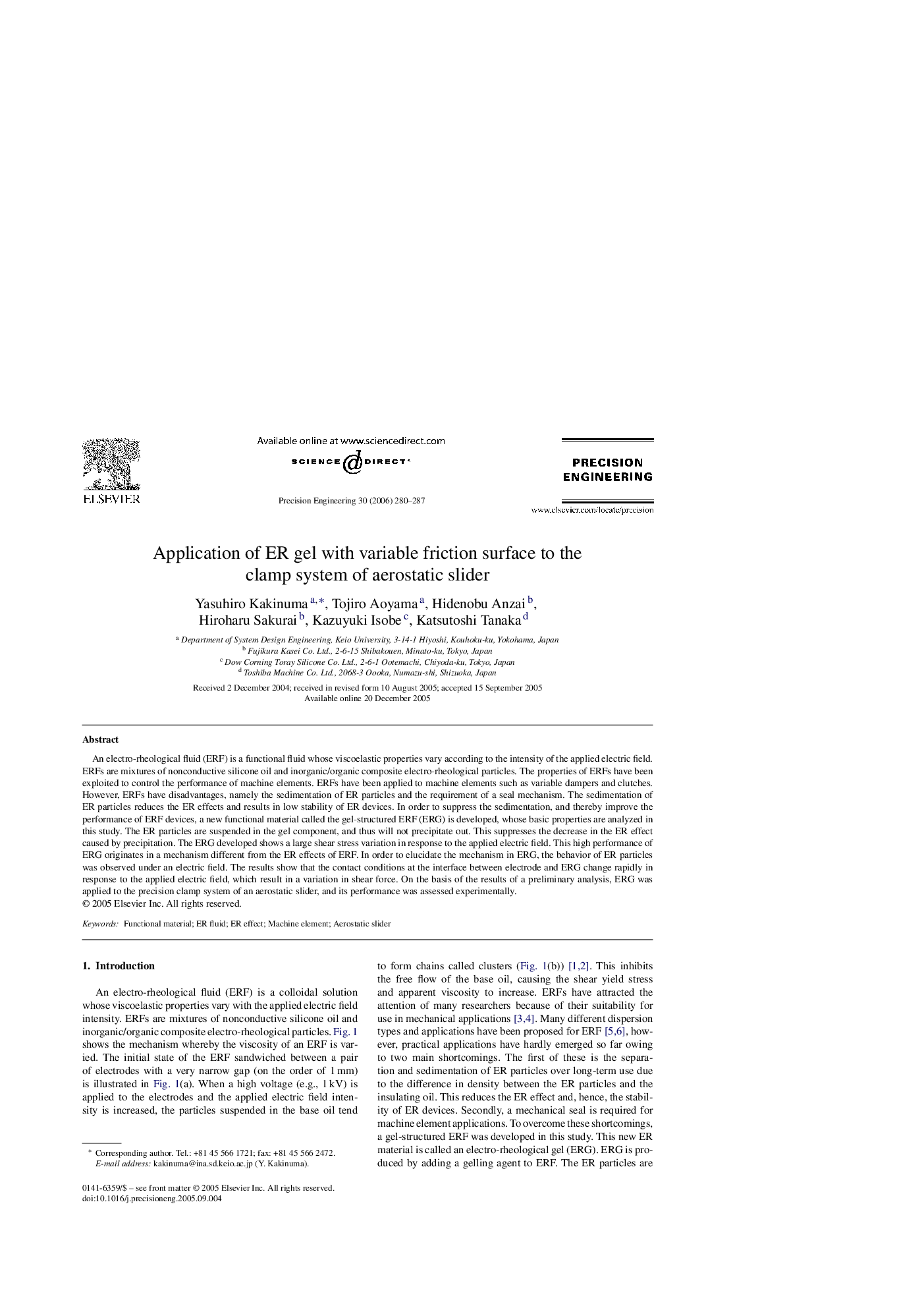| Article ID | Journal | Published Year | Pages | File Type |
|---|---|---|---|---|
| 805473 | Precision Engineering | 2006 | 8 Pages |
An electro-rheological fluid (ERF) is a functional fluid whose viscoelastic properties vary according to the intensity of the applied electric field. ERFs are mixtures of nonconductive silicone oil and inorganic/organic composite electro-rheological particles. The properties of ERFs have been exploited to control the performance of machine elements. ERFs have been applied to machine elements such as variable dampers and clutches. However, ERFs have disadvantages, namely the sedimentation of ER particles and the requirement of a seal mechanism. The sedimentation of ER particles reduces the ER effects and results in low stability of ER devices. In order to suppress the sedimentation, and thereby improve the performance of ERF devices, a new functional material called the gel-structured ERF (ERG) is developed, whose basic properties are analyzed in this study. The ER particles are suspended in the gel component, and thus will not precipitate out. This suppresses the decrease in the ER effect caused by precipitation. The ERG developed shows a large shear stress variation in response to the applied electric field. This high performance of ERG originates in a mechanism different from the ER effects of ERF. In order to elucidate the mechanism in ERG, the behavior of ER particles was observed under an electric field. The results show that the contact conditions at the interface between electrode and ERG change rapidly in response to the applied electric field, which result in a variation in shear force. On the basis of the results of a preliminary analysis, ERG was applied to the precision clamp system of an aerostatic slider, and its performance was assessed experimentally.
